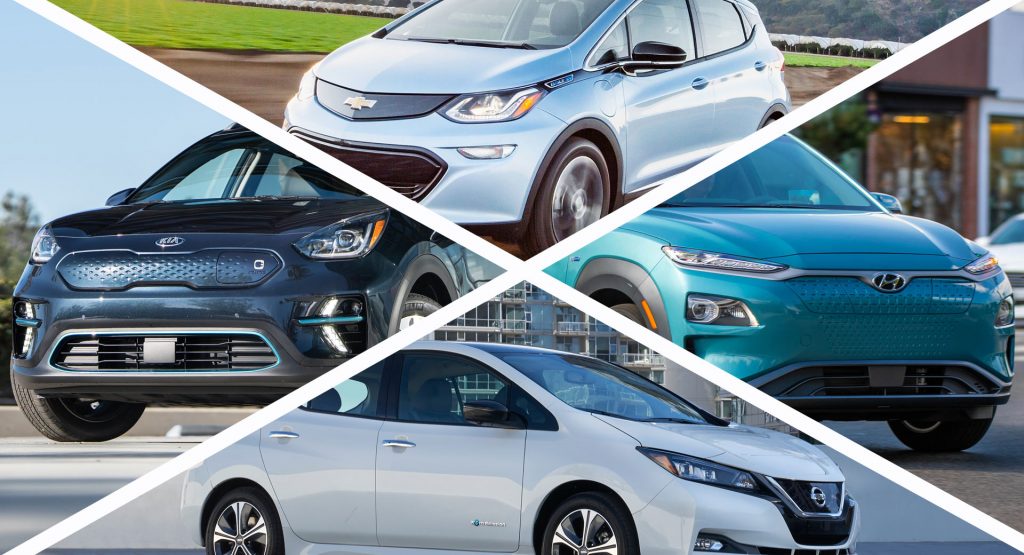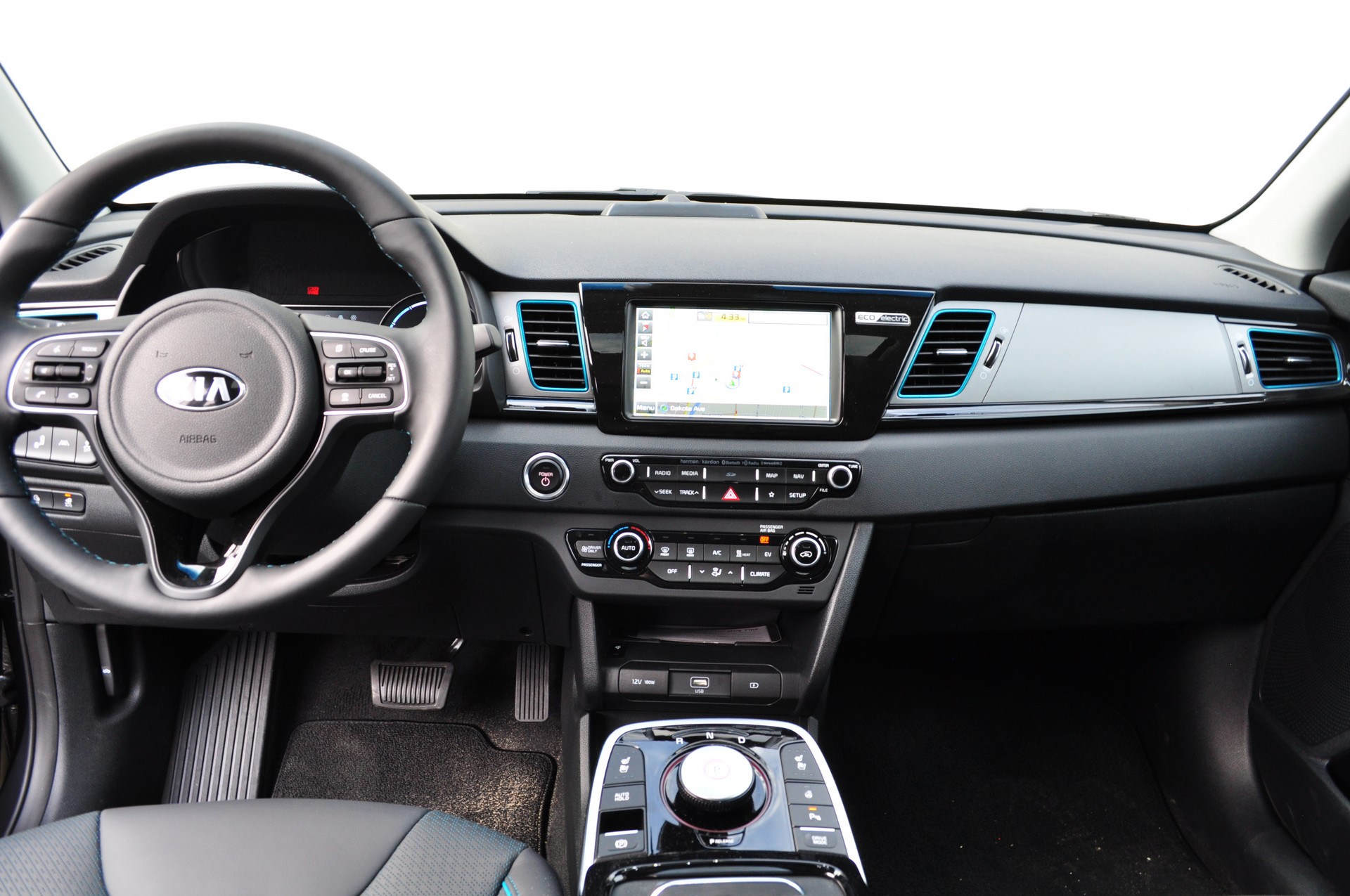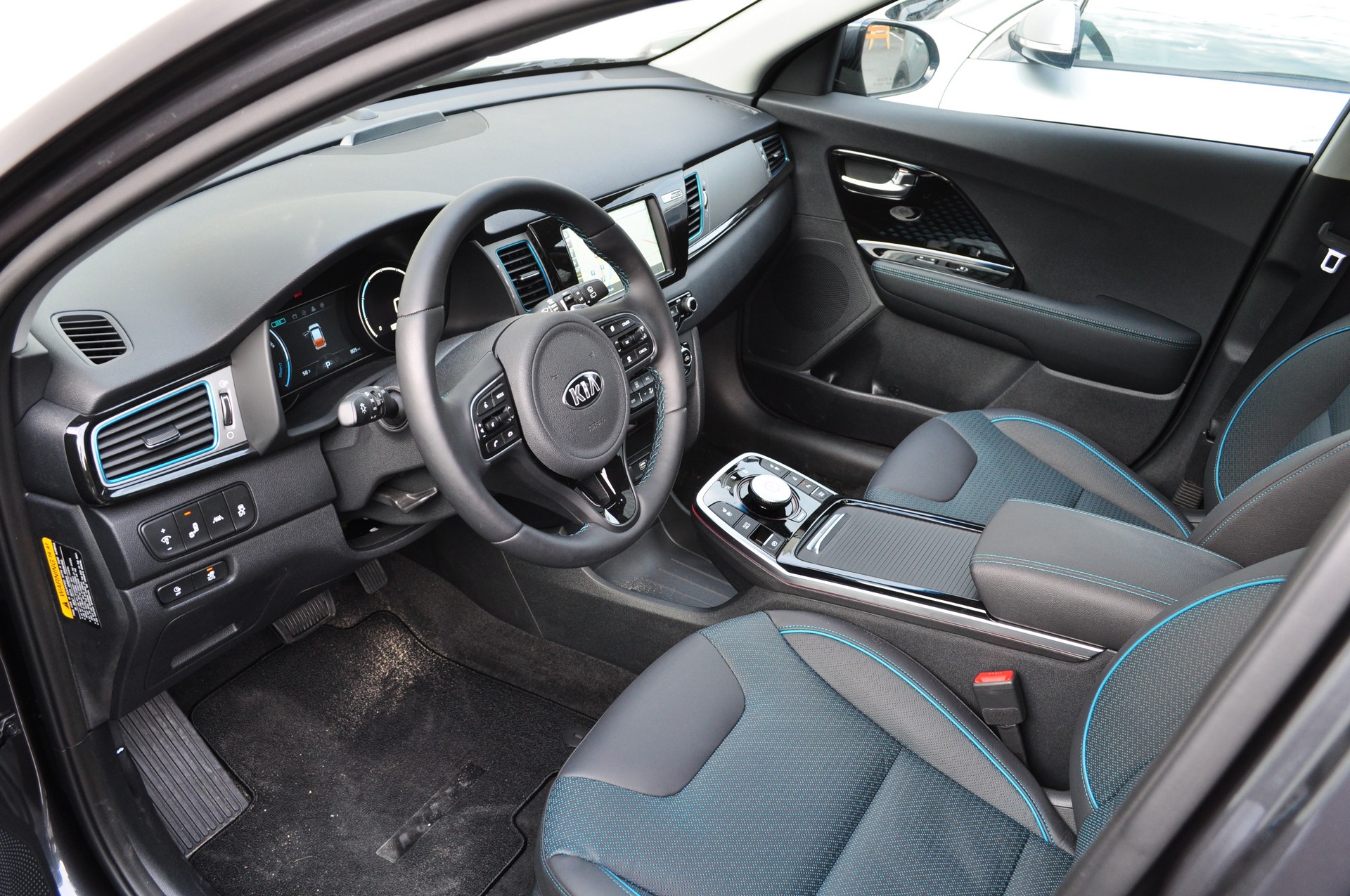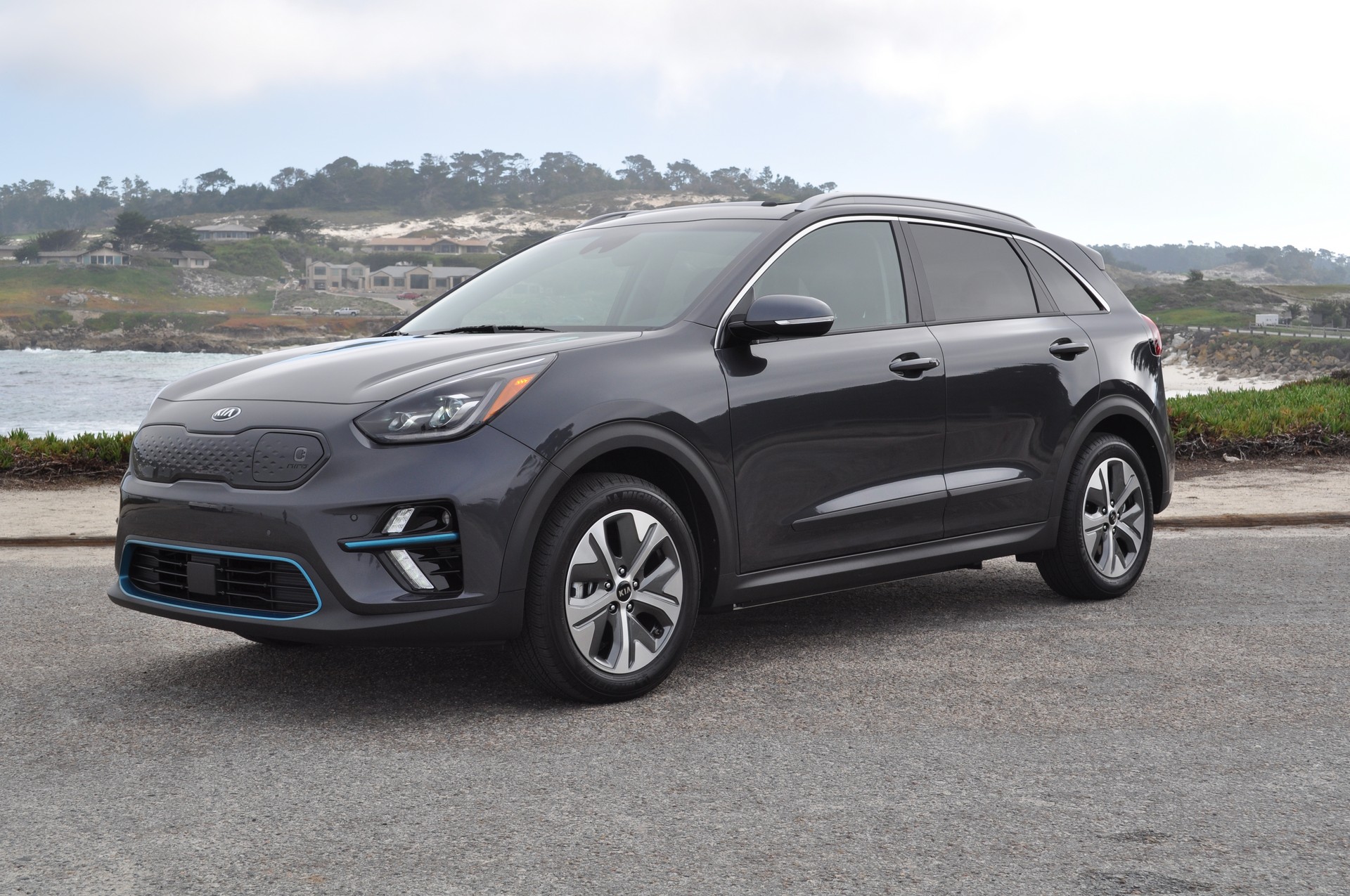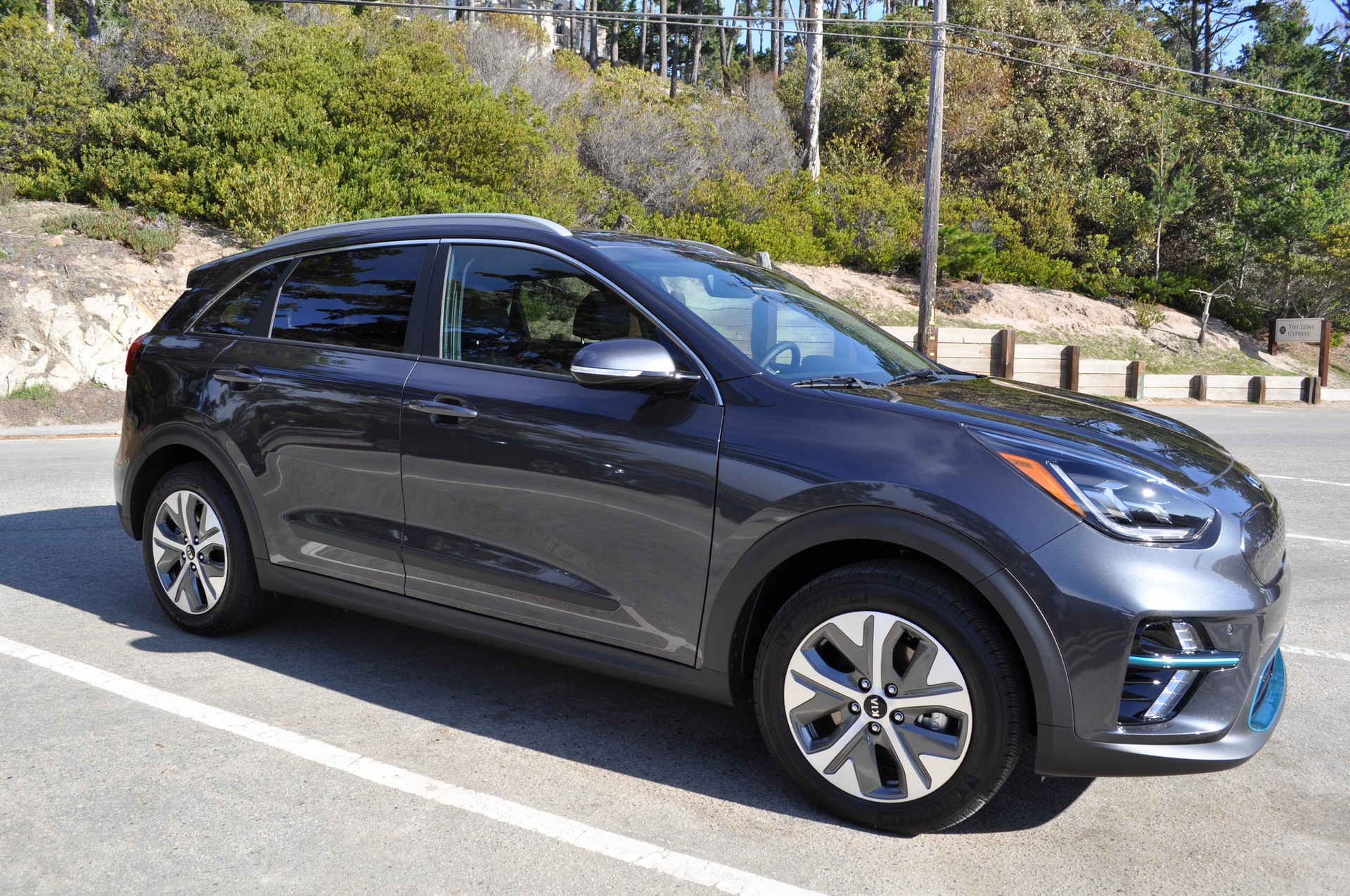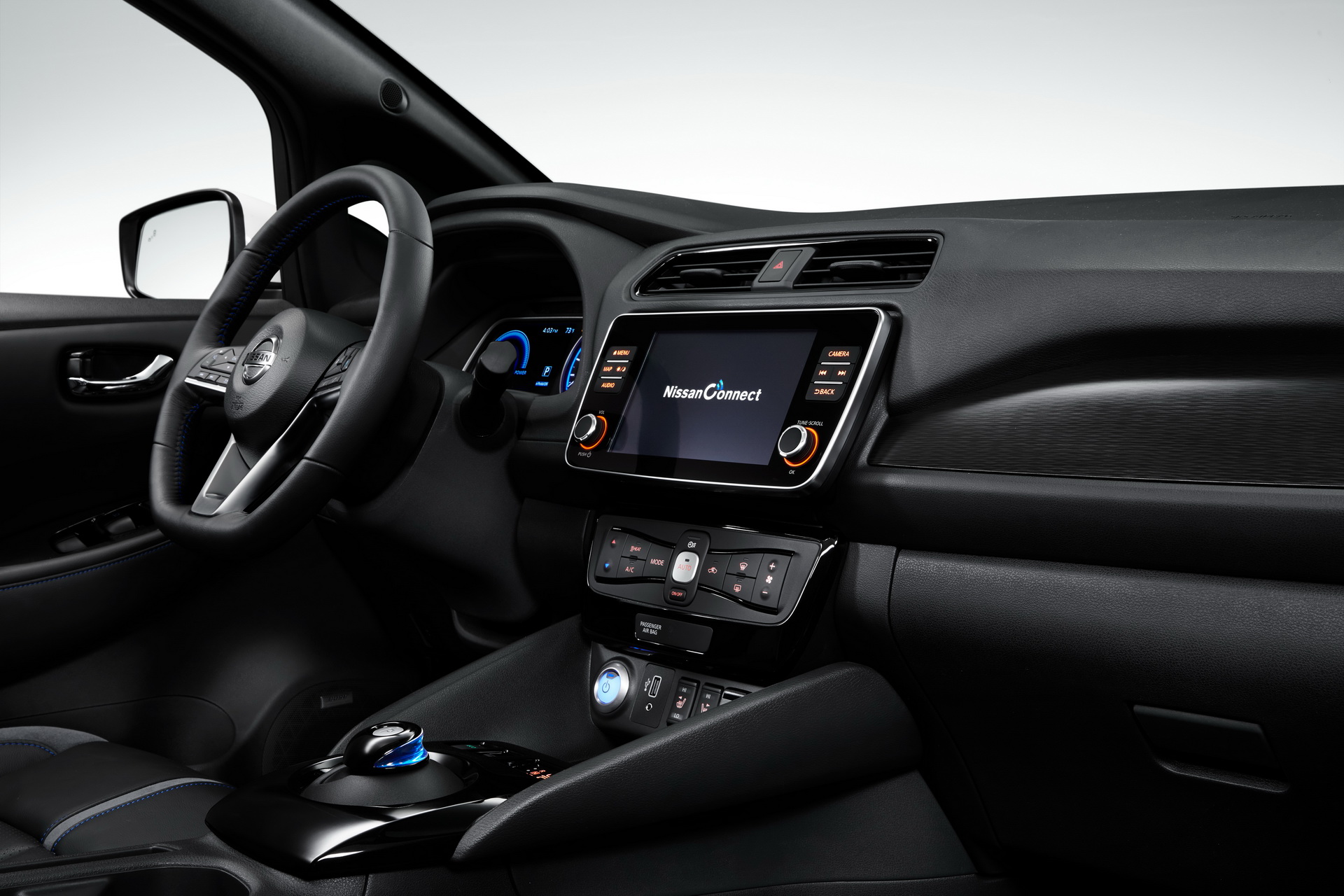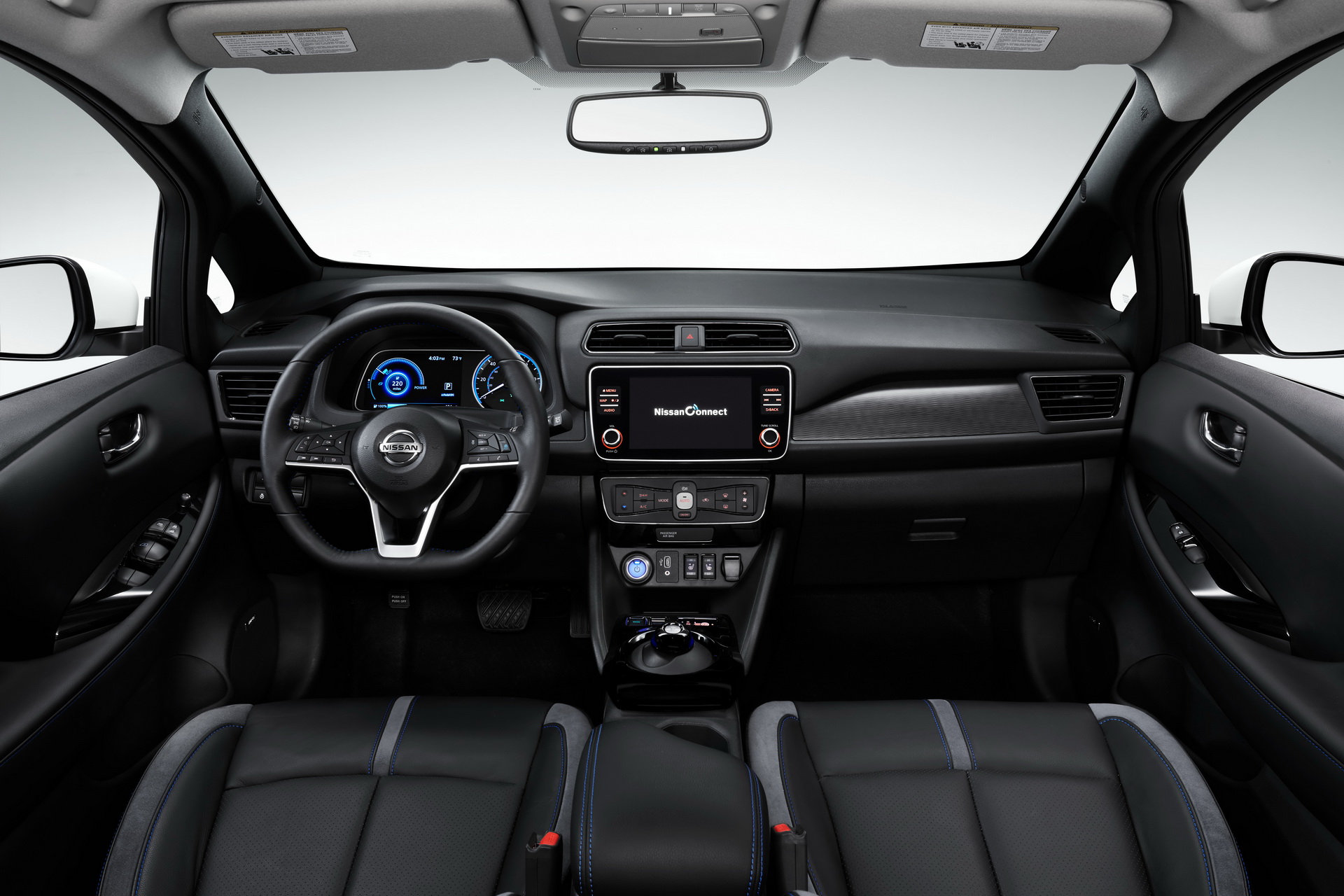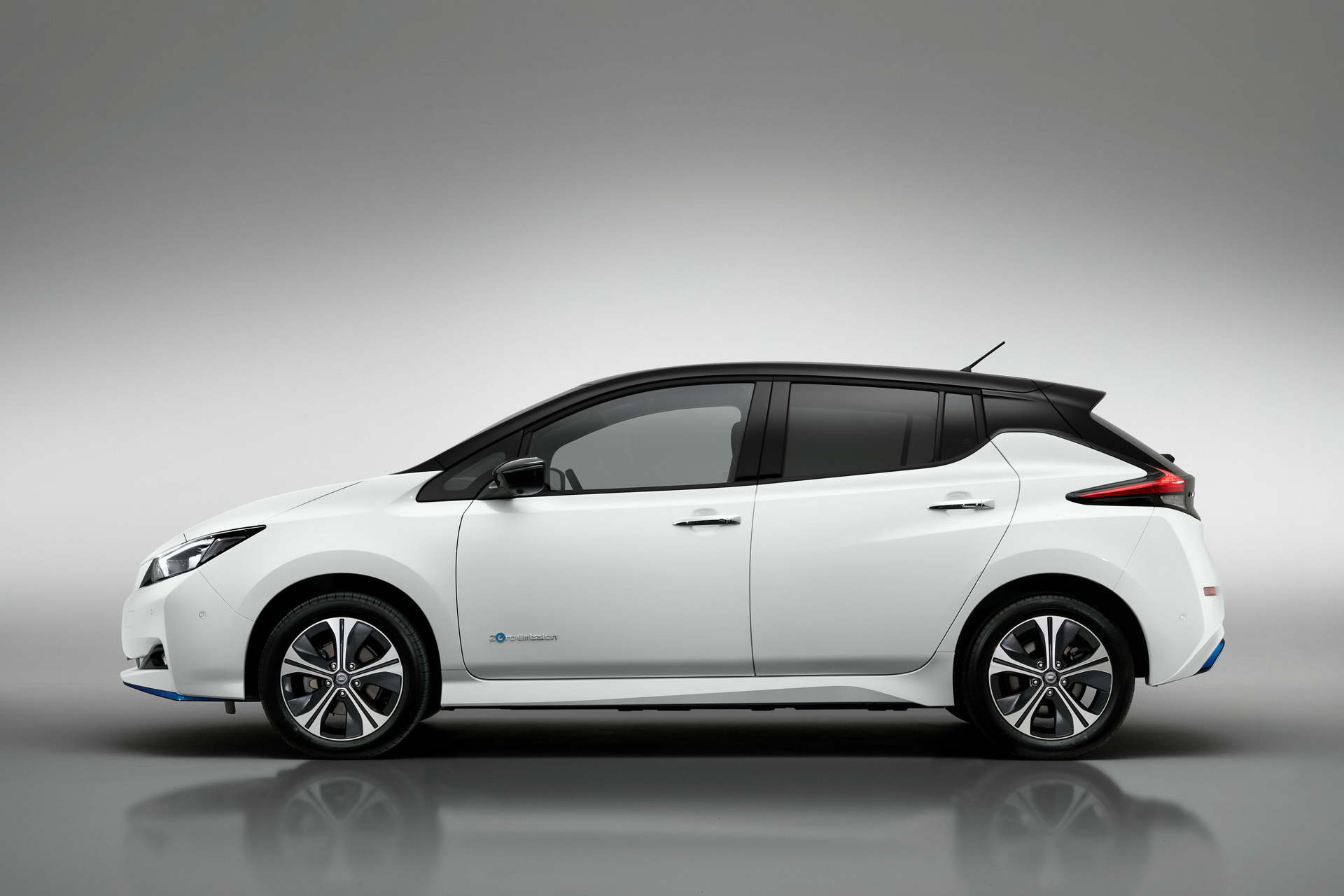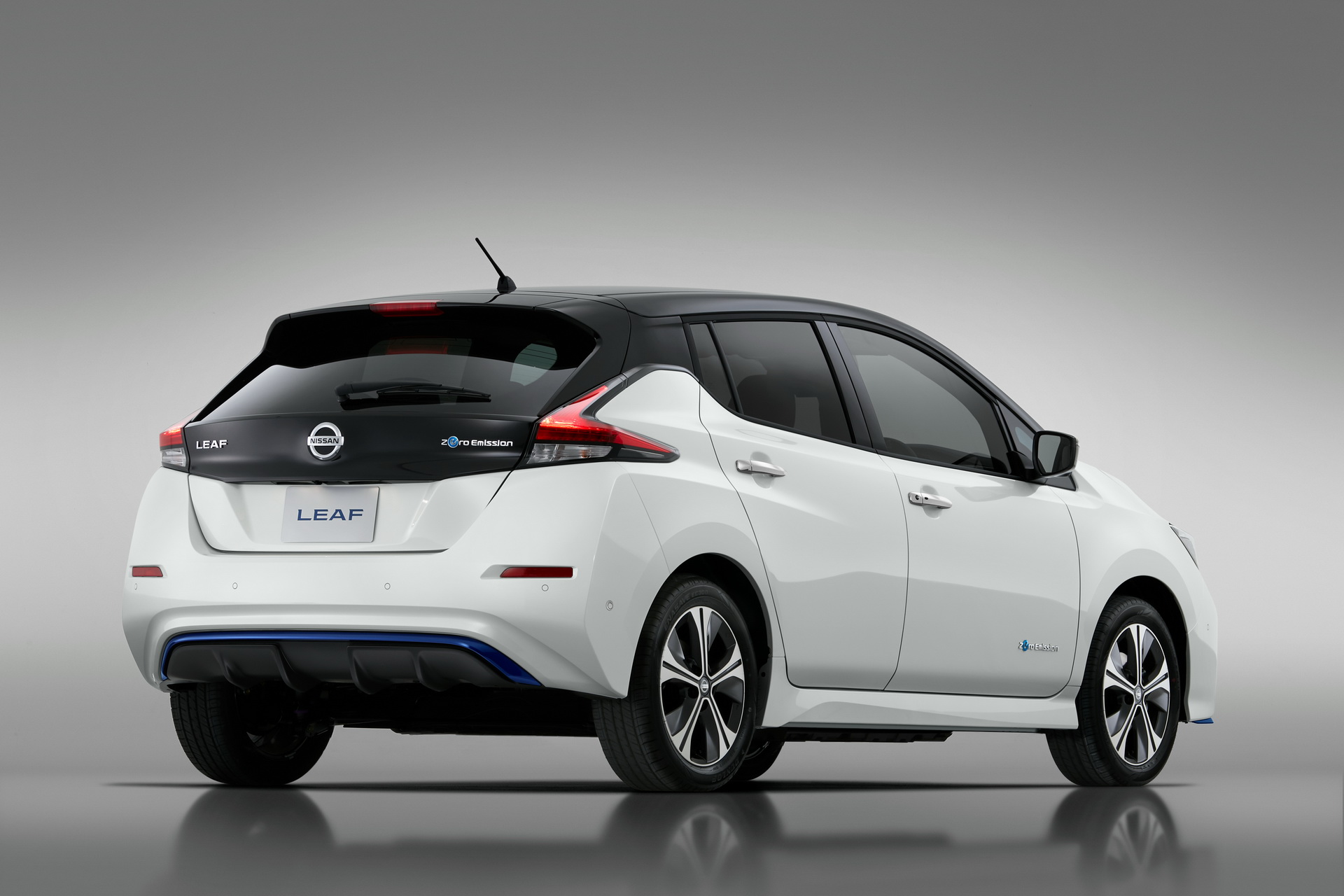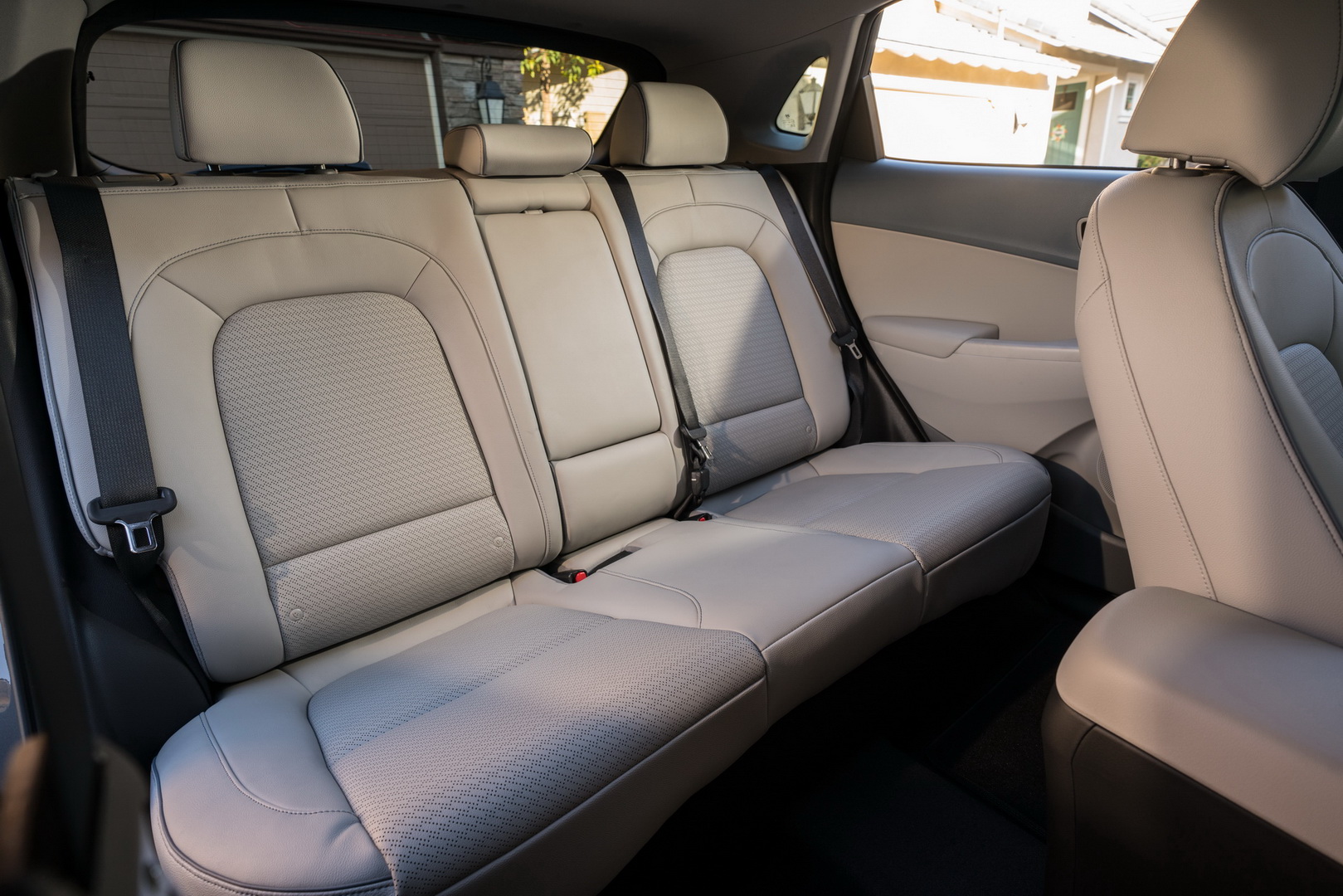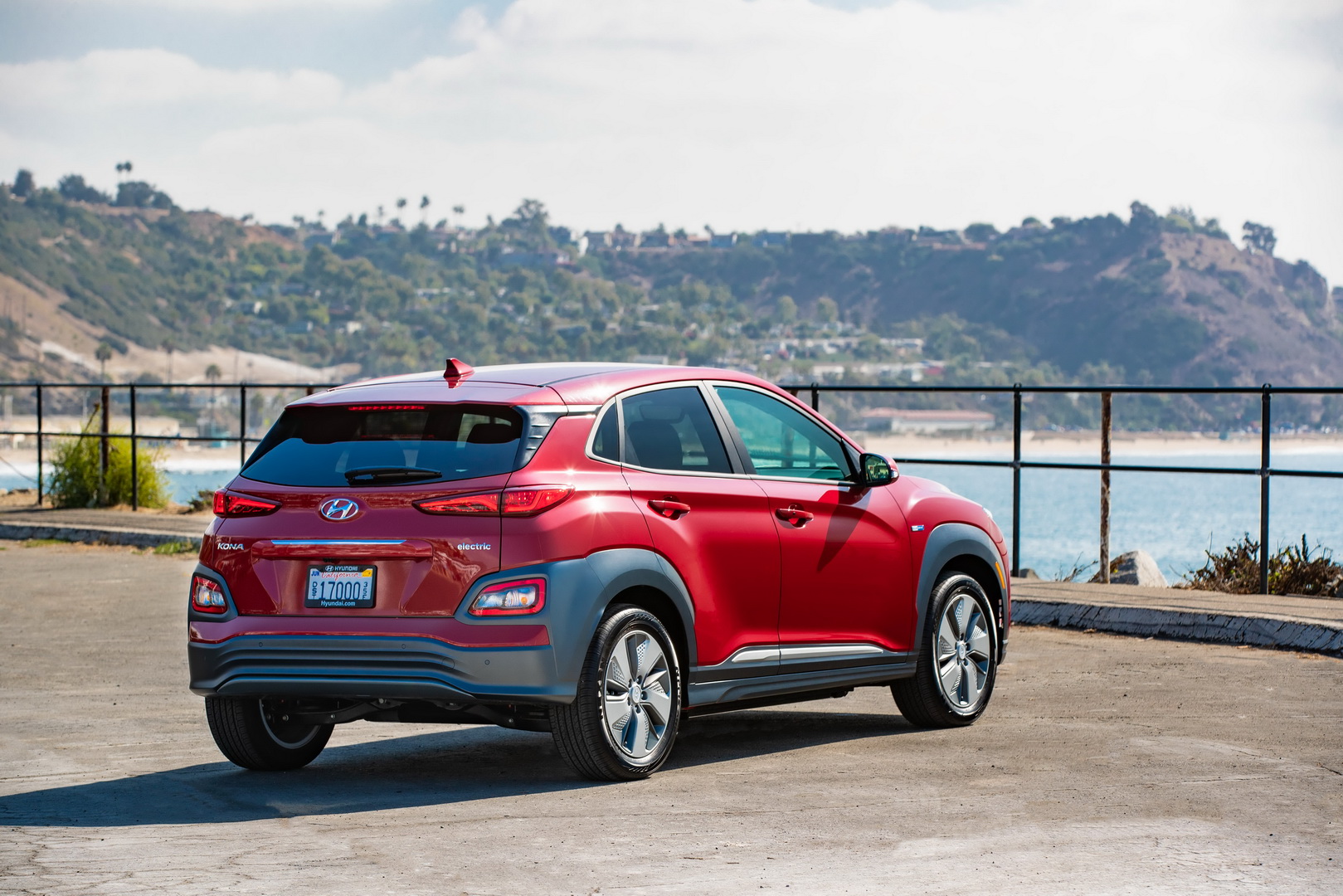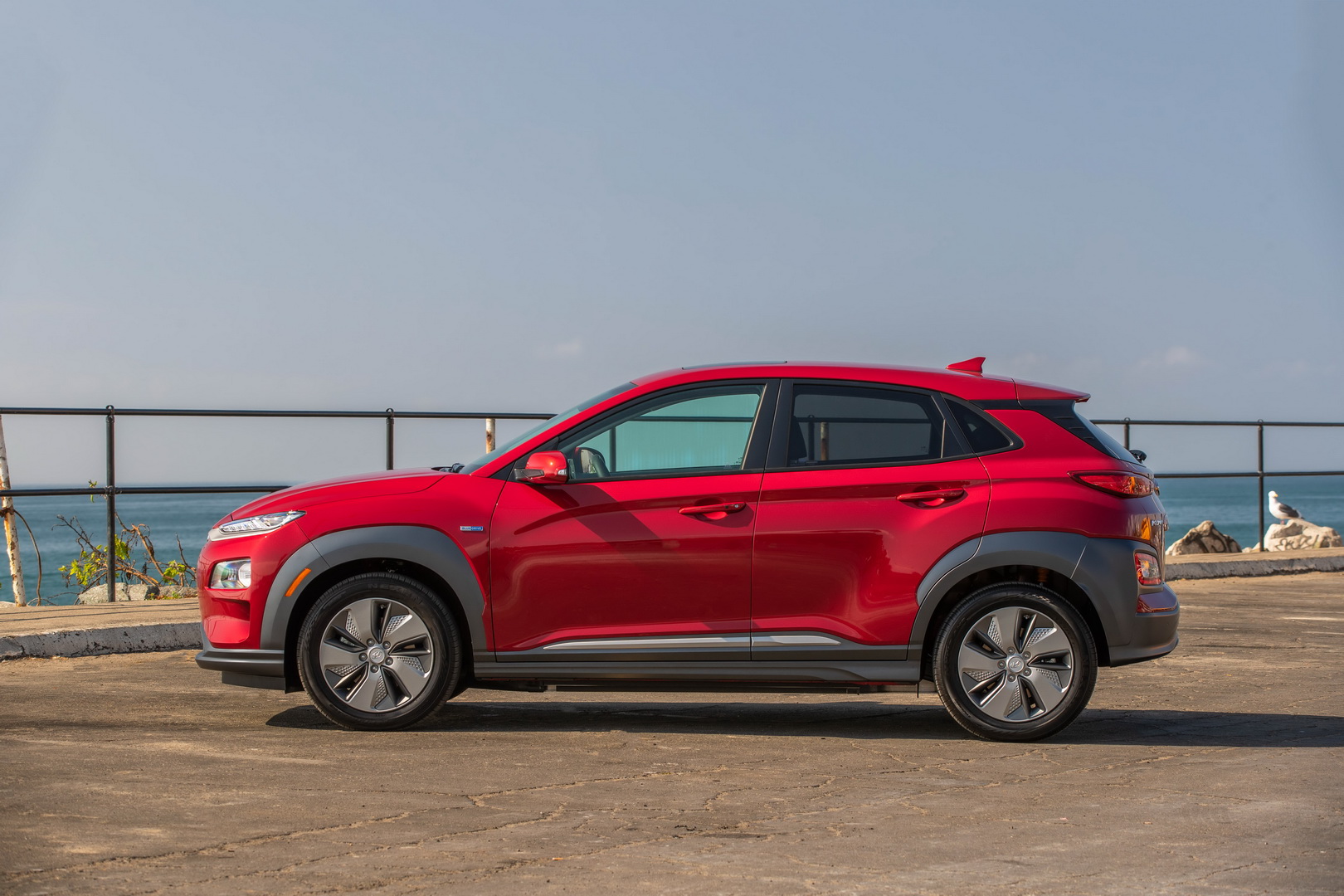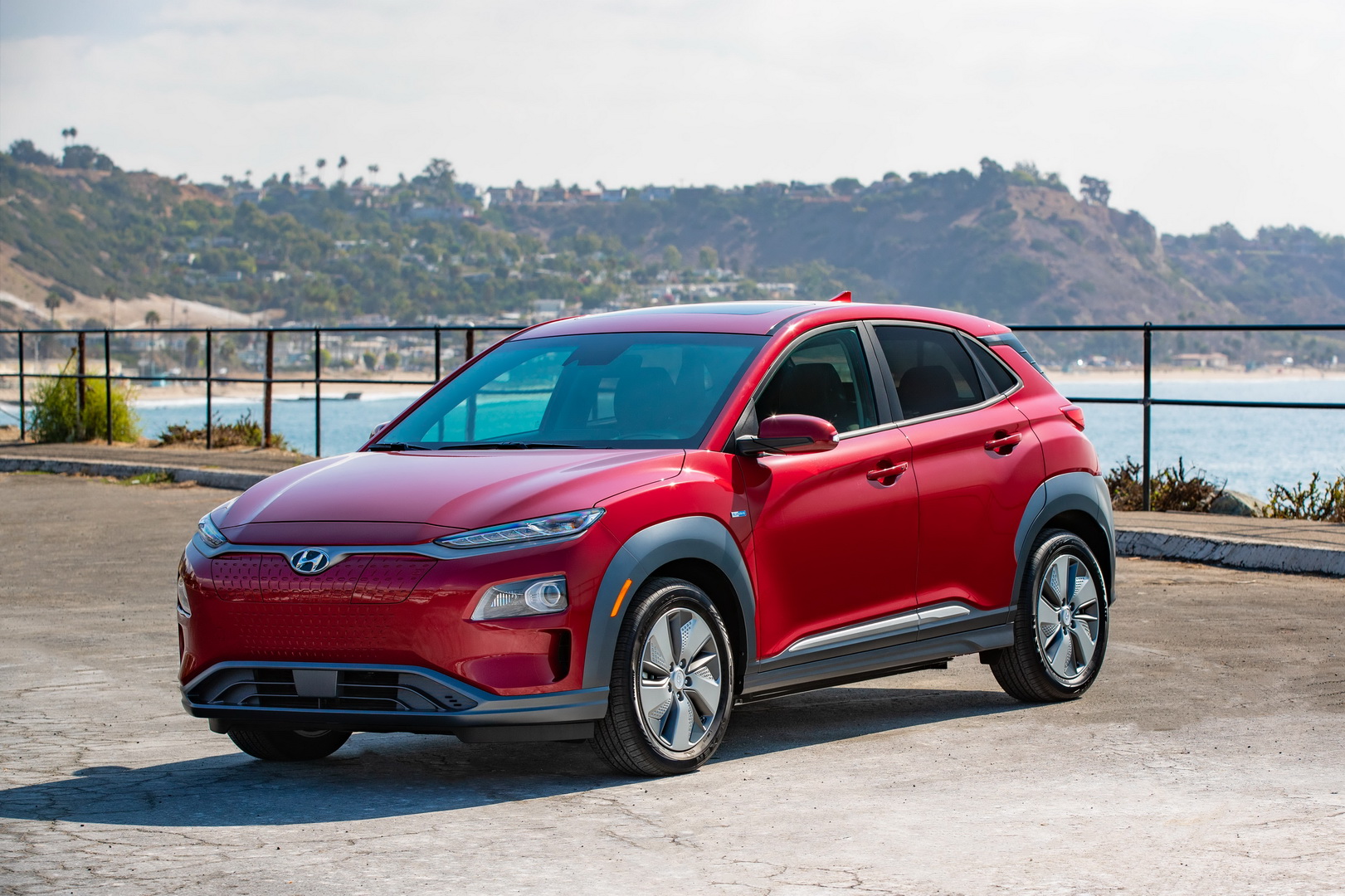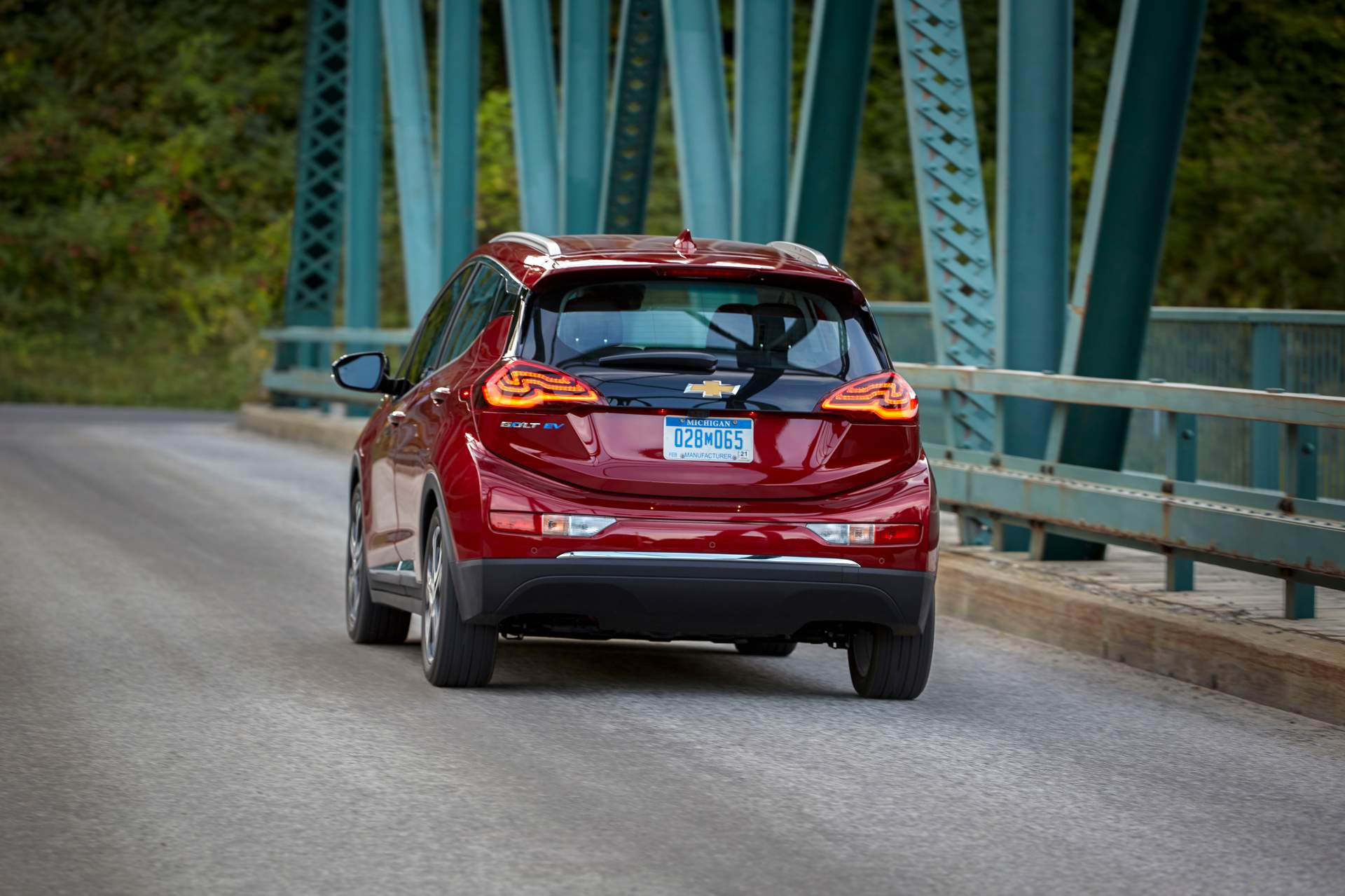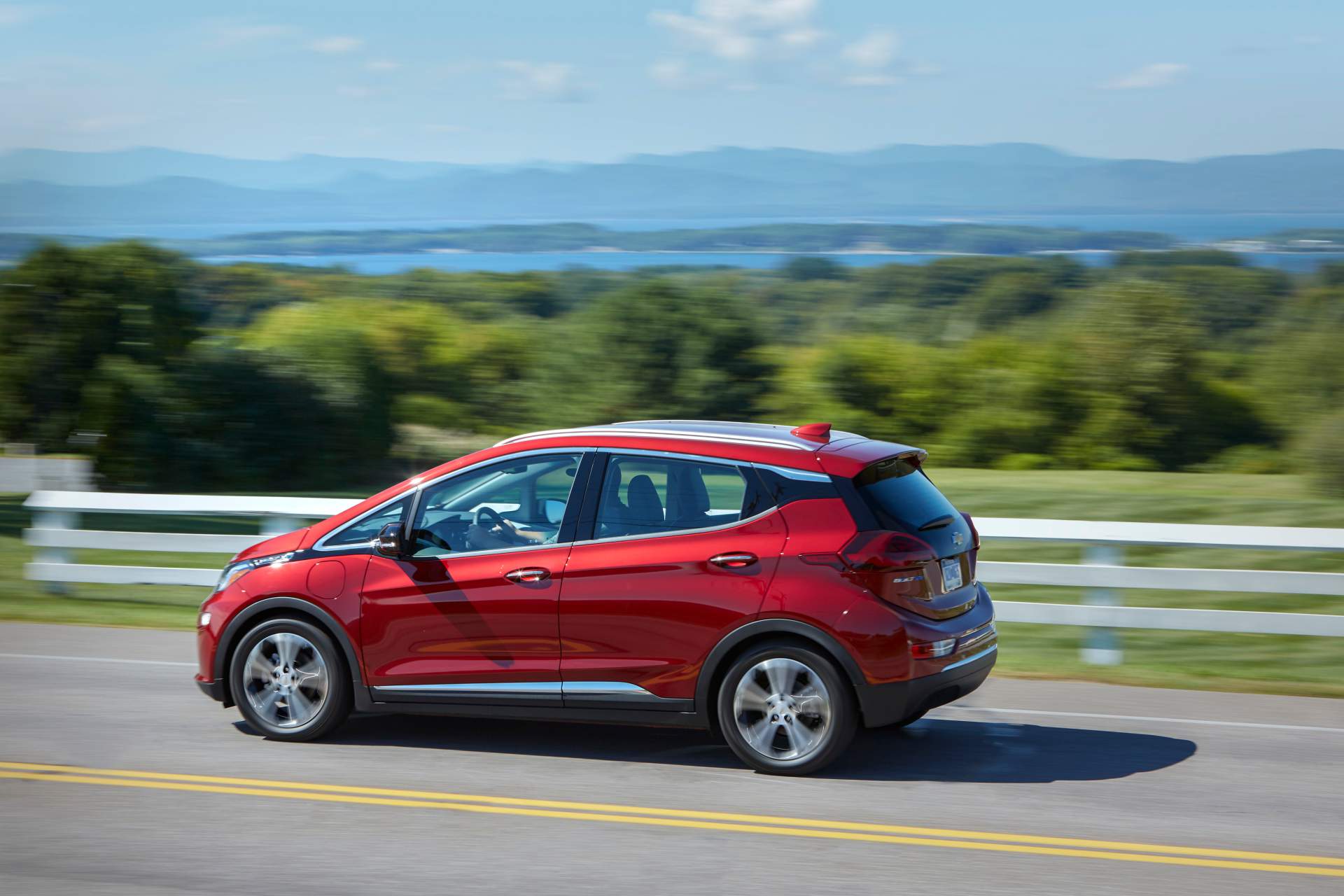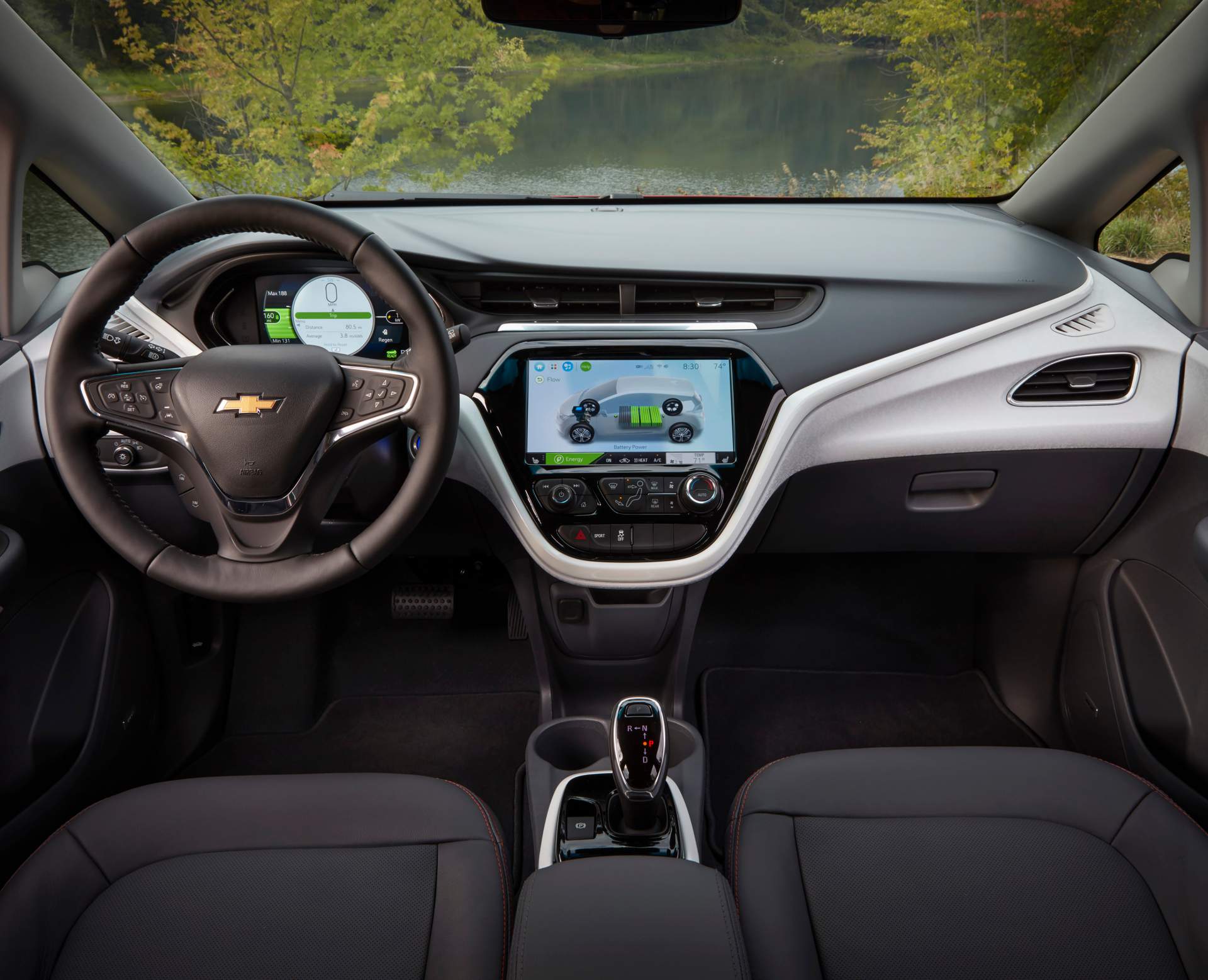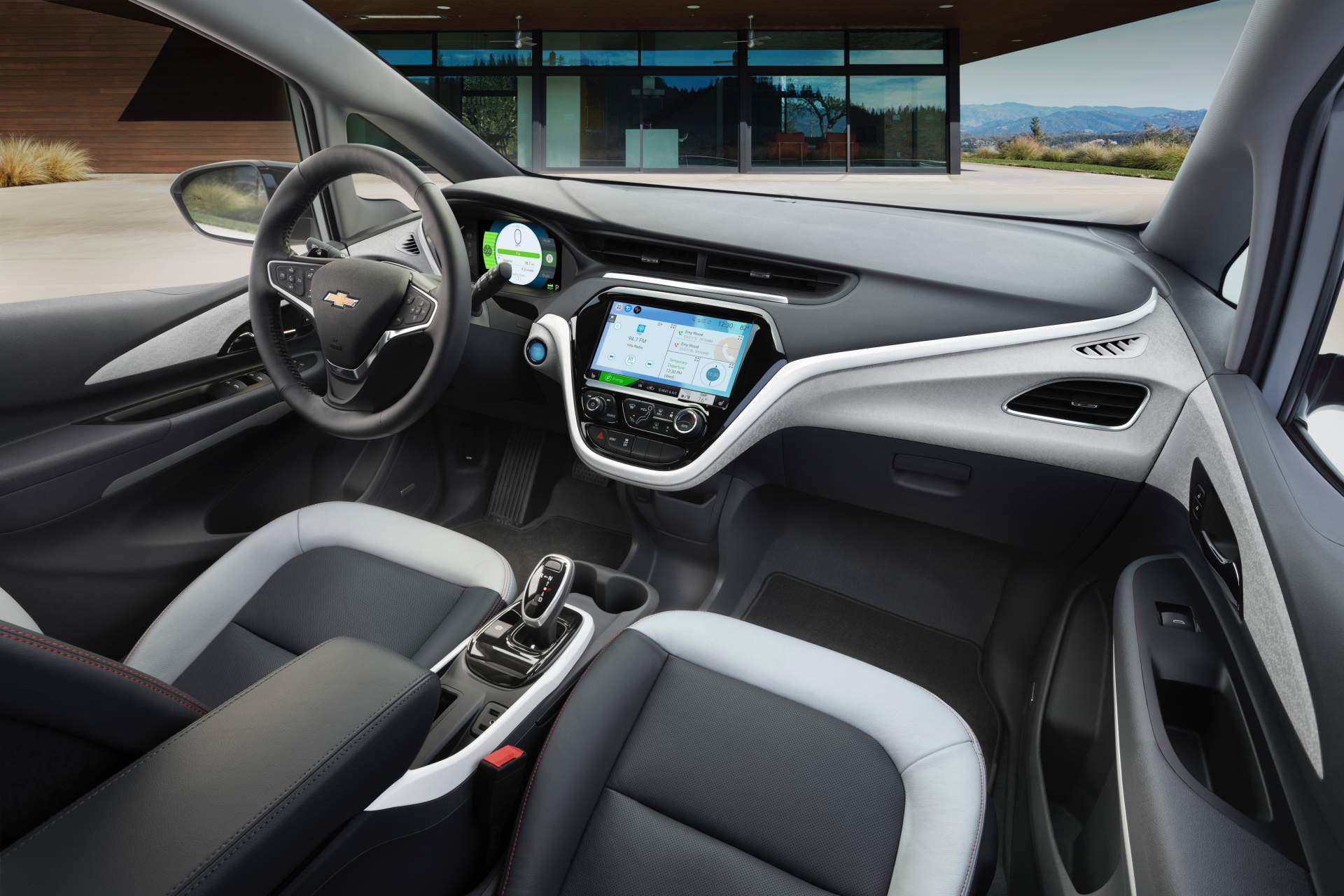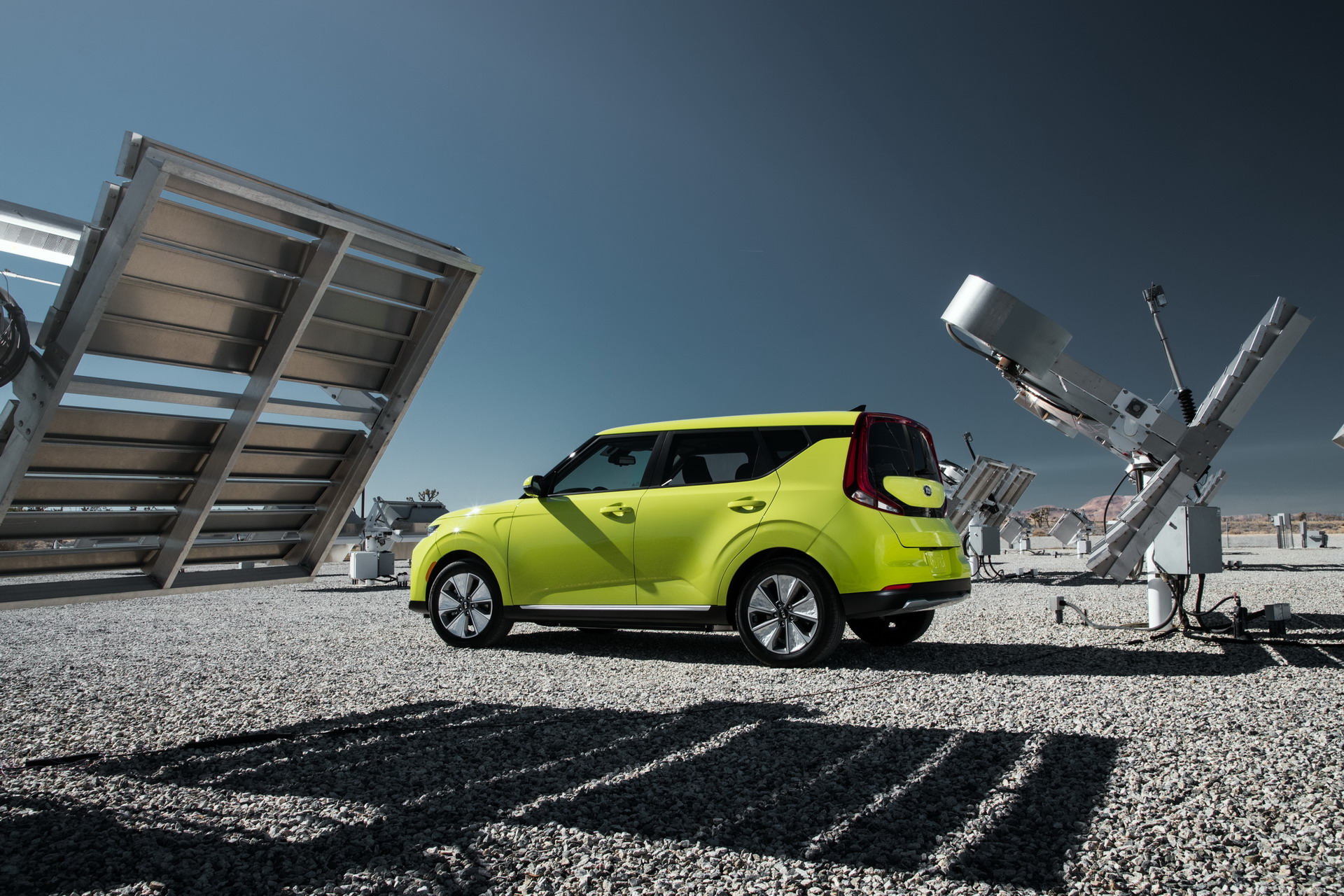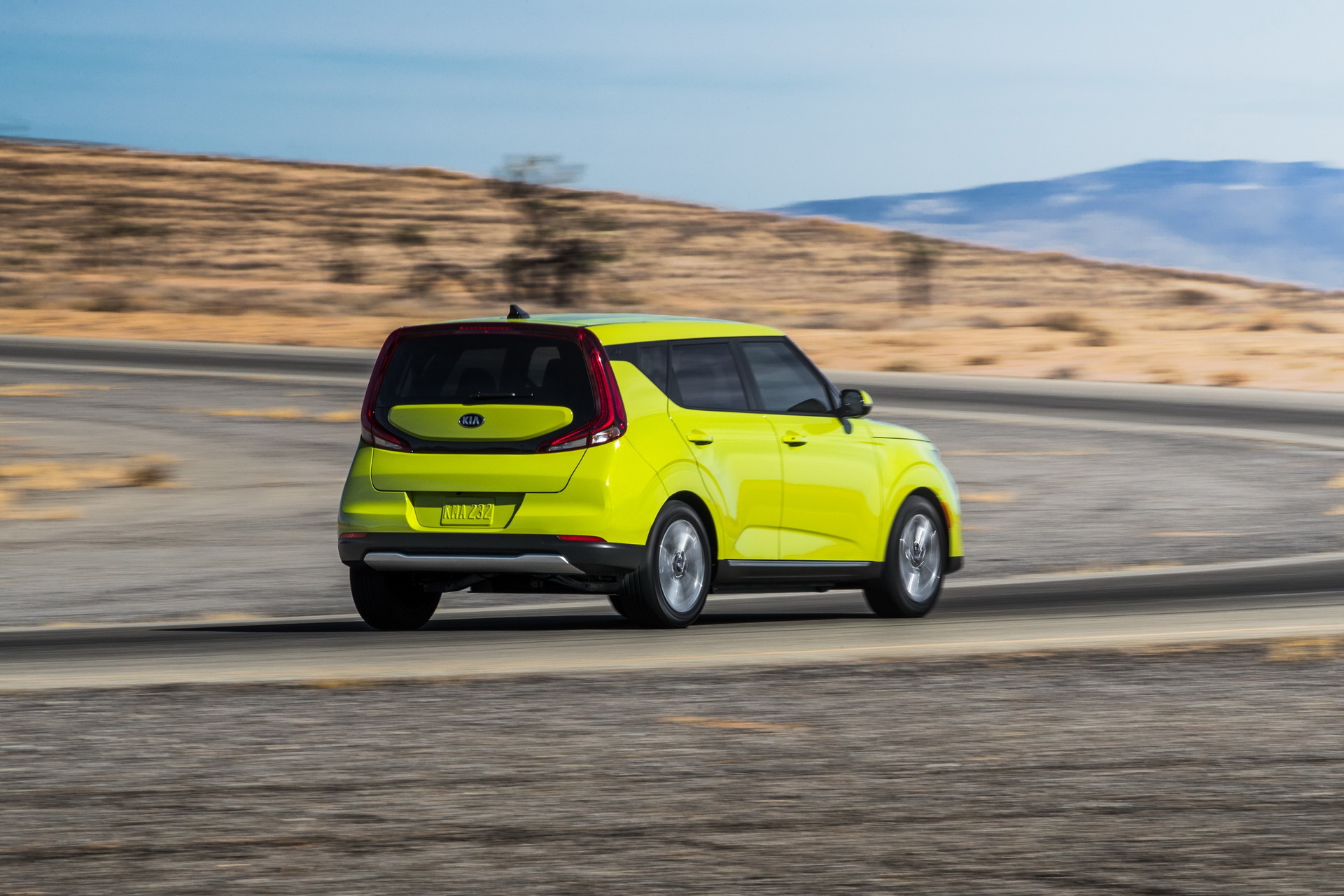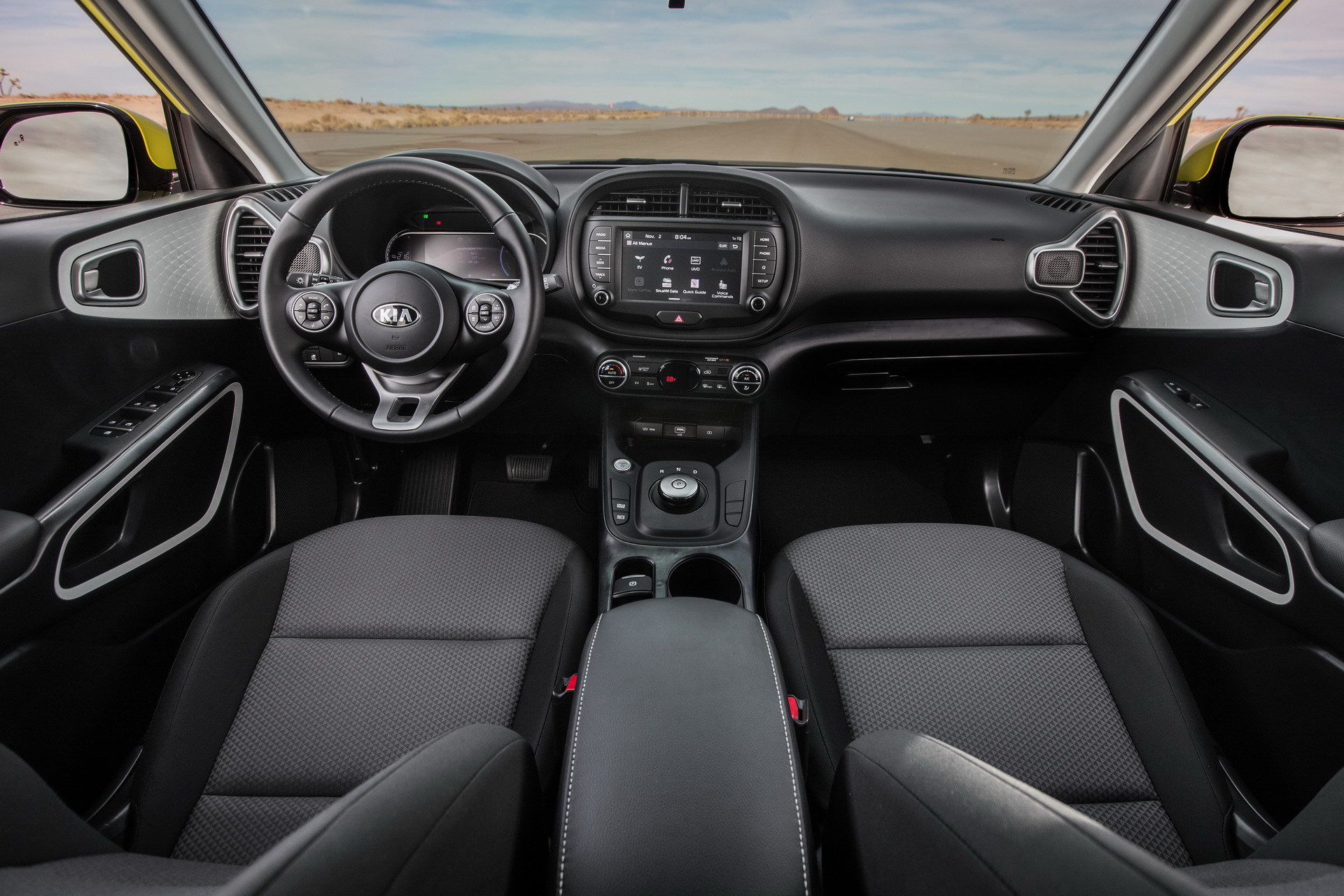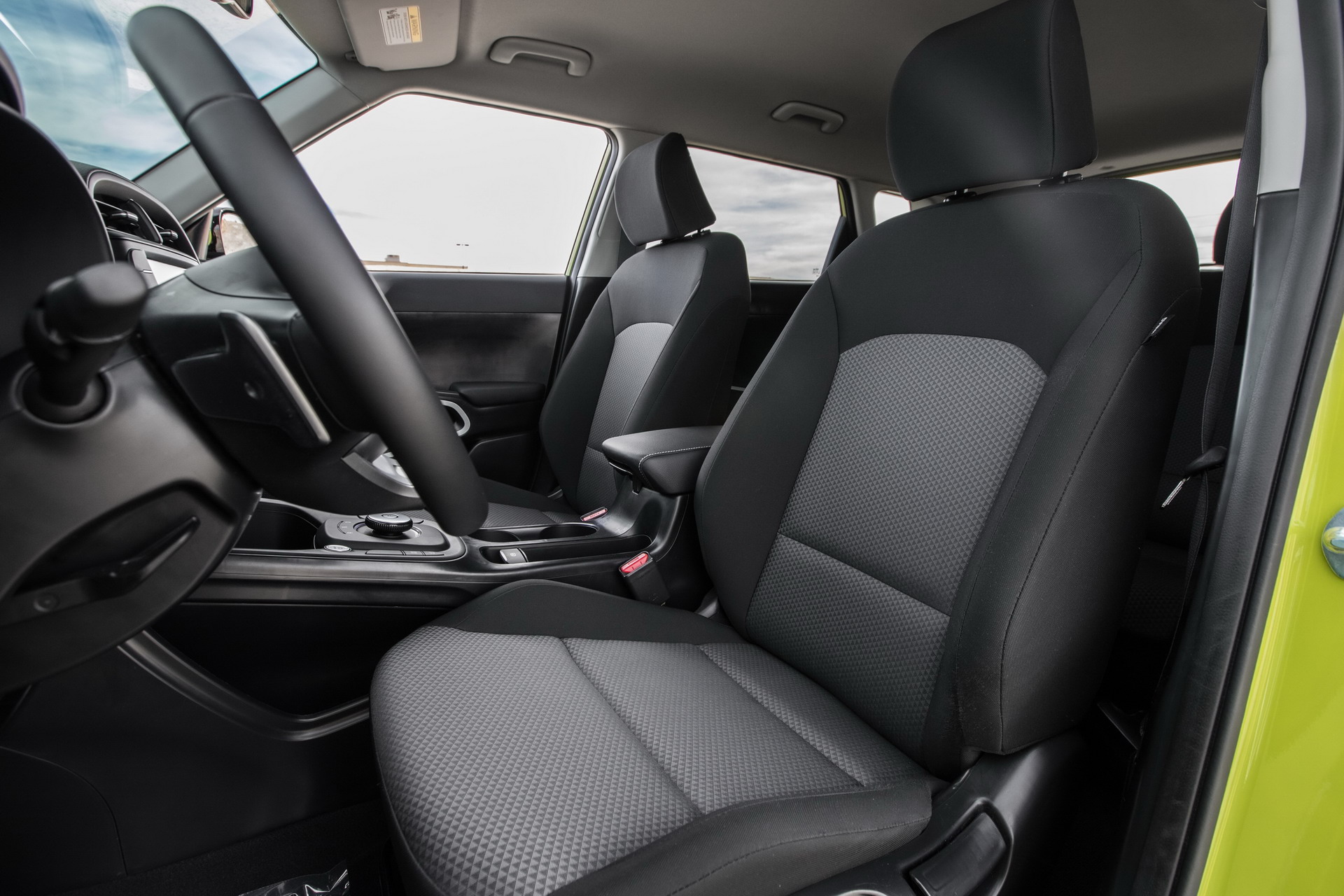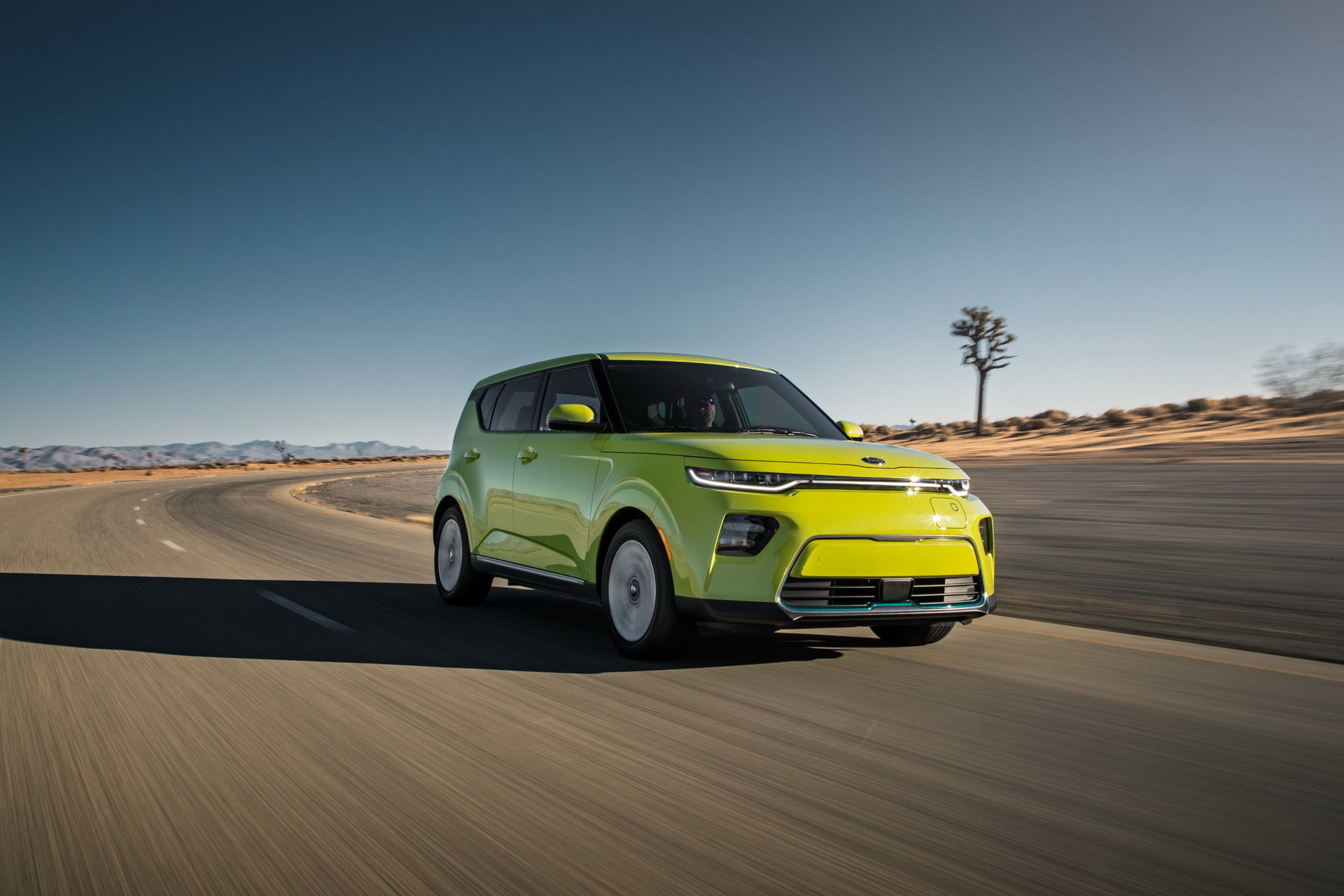The entry-level electric vehicle market is heating and we recently took a spin in the 2019 Kia Niro EV. We came away pretty impressed, but wanted to see how it stacks up against the competition.
As a result, we’ve decided to compare the Niro to an assortment of similarly priced, five-door electric hatchbacks and crossovers. This includes stalwarts such as the Chevrolet Bolt as well as new and upcoming models like the Hyundai Kona Electric, Kia Soul EV and Nissan Leaf e+.
The Niro EV is one of the largest electric vehicles in the segment, but it will likely be a tad smaller than the Leaf e+. Despite being a bit shorter, both models should share an identical wheelbase of 106.3 inches (270 cm).
At the other end of the spectrum, the Chevrolet Bolt is the little guy of the group as it’s shorter than the Hyundai Kona Electric. However, the Bolt, Kona and Soul all have a 102.4 inch (260.1 cm) wheelbase.
Interior Room
Moving into the cabin reveals a number of other differences, as some of the models have quite a bit less space than their rivals. While all five offer spacious front row seats, the rear seat is notably more cramped in the Kona Electric and, presumably, Leaf e+.
Cargo volume is another interesting area because there are sizable differences between the vehicles. The Bolt has the smallest compartment with the rear seats up, at 16.9 cubic feet (478.6 liters), but it also has the largest cargo space at 56.6 cubic feet (1,603 liters) when the seats are folded down. The Niro EV follows closely behind with a maximum capacity of 53 cubic feet (1,500 liters), while the Leaf e+ has the least amount of max boot space at 30.0 cubic feet (849.5 liters).
Performance Specs
While all five are unique, they share similar powertrains and all have a lithium-ion battery pack with a capacity ranging from 60 kWh to 64 kWh. Four of them also have a similarly rated electric motor that produces around 201 hp (150 kW / 203 PS), but the Bolt has noticeably less torque than the Niro, Kona and Soul.
The Nissan Leaf e+ is a bit of an odd ball, as its electric motor produces the most horsepower at 214 hp (160 kW / 217 PS). However, it also develops the least amount of torque at 250 lb-ft (340 Nm).
On the most important aspects of electric vehicles is range, and the Leaf e+ comes up a bit short at 226 miles (363.7 km). The Bolt and Niro are neck and neck at 238 miles (383 km) and 239 miles (384.6 km), respectively. The Soul edges ahead at 243 miles (391 km), while the Kona Electric is king at 258 miles (415.2 km).
Pricing
Another important consideration is price, but we only have confirmed numbers for two of the vehicles. The Bolt starts at $36,620 and will soon lose its full tax credit of $7,500. This means the Kona Electric will be the value leader for the foreseeable future. However, we can expect similar pricing for the Kia Niro EV which goes on sale late this month.
The Tesla Factor
While we’ve excluded the Tesla Model 3 from this comparison, it’s still worth mentioning even though the entry-level variant always seems to be six months away.
The car is slated to cost around $35,000, but it won’t be eligible for the full $7,500 federal tax credit. If the entry-level Model 3 is delayed much longer, it might not even be eligible for a partial tax credit.
That being said, the standard Model 3 is slated to have a range of approximately 220 miles (350 km). That was impressive when the car was originally announced, but all of aforementioned competitors now offer a longer range for a similar or better price when tax credits are factored in.
Despite this, a number of people are still waiting for the base Model 3. We don’t blame them, but EV buyers should know there are alternatives out there, including some that are already available to purchase.








